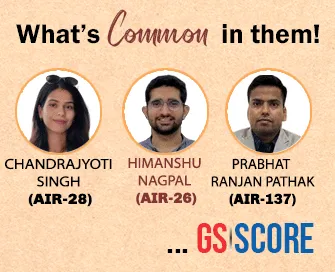

13th February 2025 (13 Topics)
Context
A popular digital content creator is under investigation for allegedly making obscene remarks (under Section 296 of the Bharatiya Nyaya Sanhita (BNS), 2023), raising concerns about the balance between freedom of speech and the regulation of obscene content in the digital space.
Which laws govern obscenity in online content?
- Bharatiya Nyaya Sanhita (BNS), 2023, Section 294: This law criminalizes the sale, import, export, advertisement, or profit from obscene material, including the display of content in electronic form.
- Obscene material is defined as material that is lascivious, appeals to prurient interests, or has the potential to deprive and corrupt individuals likely to view it. This could include excessive sexual content or content harmful to public morals.
- Punishments under Section 294 include up to 2 years imprisonment and a fine of up to Rs. 5,000 for first-time offenders.
- Information Technology Act, 2000, Section 67: This provision specifically addresses the publishing or transmitting of obscene material online.
- The definition of obscene material under this law is similar to the BNS, but the penalties are more severe: up to 3 years imprisonment and a fine up to Rs. 5 lakh for first-time offenders.
Judicial Evolution of Obscenity Laws in India:
- Key Early Case: The 1964 Supreme Court ruling in Ranjit D Udeshi v. State of Maharashtra declared the book Lady Chatterley’s Lover obscene under Section 292 of the IPC, applying the Hicklin test, which defined obscenity based on its potential to corrupt vulnerable individuals, such as children.
- The Hicklin Test: The test, originating from the British case Queen v. Hicklin (1868), set a low threshold for obscenity, focusing on whether material could corrupt the most impressionable people.
- Shift in Standards: In the 1950s-60s, both the UK and US moved to context-based tests:
- UK: The 1959 Obscene Publications Act required assessing works as a whole.
- USA: The 1957 Roth v. United States case introduced the "community standards" test, evaluating material based on the perspective of an average person.
- India's Adoption of the "Community Standards" Test: In Aveek Sarkar v. State of West Bengal (2014), the Indian Supreme Court moved away from the Hicklin test, adopting the "community standards" approach.
- It ruled that obscenity should be judged by contemporary societal norms, considering the entire work, and quashed obscenity proceedings against a magazine that published a nude image.
Freedom of Speech VS Obscenity:
- Article 19(1)(a) guarantees freedom of speech, but this right is subject to reasonable restrictions under Article 19(2), including protection of public morality.
- In Kamla Kant Singh vs. Bennett Coleman (1987), the Supreme Court balanced free speech and public morality, ruling that explicit sexual content did not meet the threshold of obscenity based on contemporary community standards.
PYQQ: What do understand by the concept “freedom of speech and expression”? Does it cover hate speech also? Why do the films in India stand on a slightly different plane from other forms of expression? Discuss. (2014) |
More Articles


